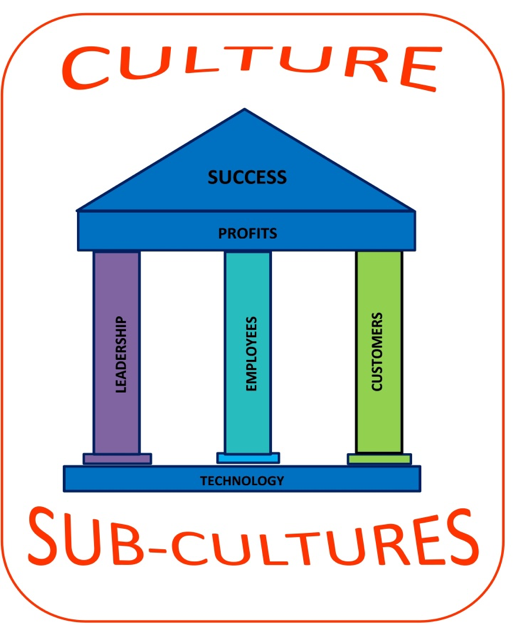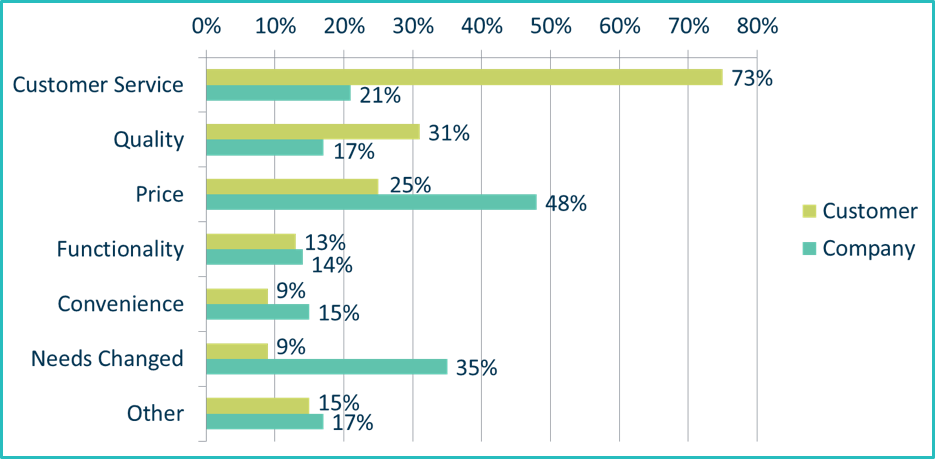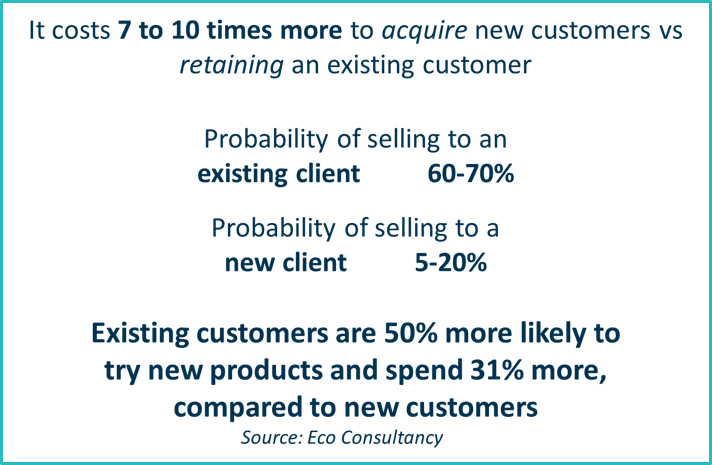There are three main pillars that keep an organization strong. Though some may seem obvious, far too many companies don’t realize which pillar is weakening their potential and what to do to improve results. Visionary leadership, employee engagement, and customer centricity, steeped in a strong organization culture and reinforced by technologies that support the whole, create a thriving environment. Every company regardless of size, industry, product, or service, needs to build their business on these pillars or risk poor performance.

PILLARS OF SUCCESS
Visionary leadership
A short-term vision and incremental changes are tempting in today’s fast-changing competitive landscapes. Yet, because organizations are faced with volatility, uncertainty, complexity and ambiguity, they need to base their decisions on a long-term vision and courageously make deep changes required for agility and growth. By using deep change as a creative force to engage the hearts and minds of their employees and their customers, companies will build a brand of choice.
Today’s tendency is to run the business on reactive mode and jump on new trends without necessarily understanding their long-term impact. Taking time out to reflect seems like a luxury most businesses can ill afford. But if decisions are not being made based on vision, mission, and strategy, the company will lose its way. Without a true north, people throughout the organization will find it difficult to understand which actions are best suited to achieving long-term goals. Furthermore, a compelling vision and mission provide purpose that employees can get behind. This sense of purpose leads to personal fulfillment and employee engagement.
Employee engagement
The mechanistic view of yesteryear no longer serves organizations. With a disengaged workforce organizations suffer from high turnover, high absenteeism rates, and lack of productivity. When employees are just putting in their time for a pay check, so much potential is wasted. Here are some 2017 stats on employee engagement reported by Gallup:
- only 4 in 10 employees say they have the opportunity to do what they do best
- only 39% of millennials strongly feel that they learned something in the last month
- only 50% of employees know what is expected of them in their jobs
- engaged business units deliver 21% greater profitability
People need to feel a sense of purpose in their work and creating purposeful organizations is the secret to longevity and profitability. Employees need to have a clear understanding of what is expected of them and then be allowed the freedom and flexibility on how they deliver results. Leaders need to learn to let go of control, coach their employees on how to make better decisions, and allow them to take responsibility for those decisions.
Customer centricity
Technological advances have made it possible for companies to provide multiple channels for customers to communicate with them. But regardless of how you are communicating with your customers, the key is keeping them satisfied by knowing what to do with the vital information you are collecting. Is the data used to improve products and services? Is it shared with the entire company so every department understands what their role is in satisfying customer needs?
Sobering customer statistics show how disconnected companies really are from their customers. One survey from the American Society for Quality reveals that 68% of customers stop doing business with companies because they feel neglected compared to 14% who leave because of products or services, and 9% leave because of competition.
In another survey by RightNow Technologies comparing why customers leave to why companies believe they lose clients, 73% of customers claimed they take their business elsewhere because of poor customer service. Yet 49% of companies believe they lose customers because of price and 35% believe customers’ needs changed. This disconnect results in companies spending resources to fix the wrong problem when it comes to retaining customers.

WHY CUSTOMERS LEAVE AND WHY COMPANIES THINK THEY LEAVE
Keeping existing customers loyal pays off in both the short and the long-term. According to Eco Consultancy, it costs 7 to 10 times more to acquire new customers compared to retaining an existing customer. The probability of selling to an existing client is between 60% and 70% while the probability of selling to a new client is only between 5% and 20%. Moreover, existing customers are 50% more likely to try new products and spend 31% more compared to new customers.

Organization Culture
There are different perspectives from which to view organization culture. According to Cummings and Worley, “…culture is defined as the pattern of artifacts, norms, values, and basic assumptions about how to solve problems…” In essence these elements provide organization members with indications of “what really matters around here,” “how we do things around here,” and “how we react when a problem arises.” Many successful companies, like Apple, Disney, and Nike for example, are renowned for their strong culture. In fact, culture is synonymous with their brand and is rooted in the company’s history. Strong founders and top executives perpetuate traditions that reinforce the culture.
In the hopes of strengthening their organizations, numerous companies undertake a culture change. These companies fail to understand that corporate culture is not something that can be changed. Culture being a RESULT of other key aspects of the company, it can only be changed by transforming the organization. And that requires a clear strategic vision, commitment from the top, leadership at all levels, and a strong fit between members of the organization and its strategic vision.
Technology
It is hard to believe that businesses today could function without a CRM, ERP or other business management systems but there are still many companies of varying sizes that are using Excel, Outlook, and other parallel systems. While some are moving forward with industry 4.0, others are still debating whether they should invest in basic technology. Of course, if they make the investment for the wrong reasons and don’t make the commitment to align the organization, the investment will be wasted.
You may be thinking that what has worked for you in the past should continue to serve you in the future. When it comes to technology you will be left far behind your competition if you don’t equip your company with tools to integrate the management of core business processes, collect and centralize data to make decisions that elevate the customer experience, and increase the organization’s effectiveness. Let’s take the example of Customer Relationship Management. CRM is about developing customer strategies and implementing technologies that increase customer loyalty and customer intelligence. Far too many implementations have failed, giving deployments of this type a bad reputation. But the problem isn’t the technology. That’s only a tool. The problem remains a lack of commitment from the top to integrate technology into the larger organizational strategy. A deployment isn’t a one-time event. It is an ongoing process of managing change to ensure the technology continues to evolve with the needs of the business.

If your company has deployed a technology but fails to achieve ROI, you can engage in the process and turn the situation around. It’s never too late to get back on track.
Paola Graziani
Principal Consultant
Altimum IMS

